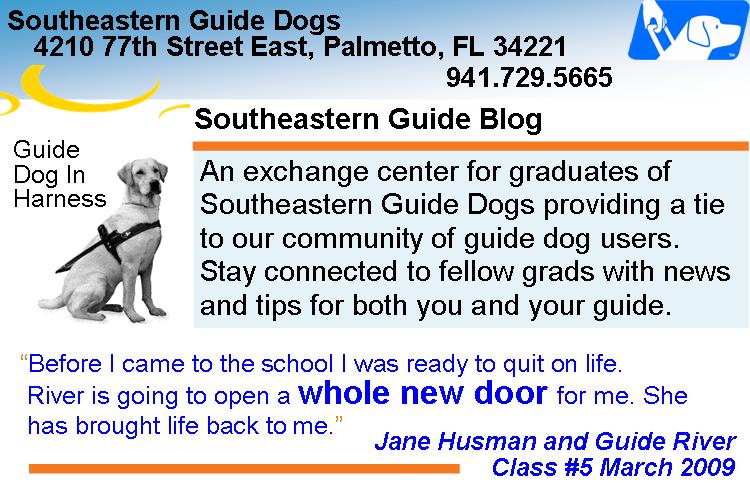ID and ID again. Make sure that your dog has adequate ID firmly attached to his collar. Your up-to-date contact information is important for a tag. Collars can even be ordered with your phone number stitched into them in large print. Your dog's collar should be well-fitted and not loose enough to fall off. Of course you have the added security of your dog's microchip registered to the school.Check the shelters frequently and be aware that in some areas there may be more than one shelter. In preparation, it is a good idea to have a list of the shelters with their phone number, address, hours of operation and how long they hold strays. A phone call to them will help you compile the list. Even though we hate to think of it, also ask if they keep track of dogs found dead by the side of the road. If they don't, ask if the Department of Public Works in your area does and add their information to the list. Then keep the list where you can readily find it.Have a rock-solid recall that you practice often with your guide. It's much easier to find a missing dog when that dog will come to you on command.Ask someone to take several photos of your dog now. Then get a stack of fliers made up with your dog's mug and a contact number to put up. Anyone handy with a computer or a local copy shop can make up fliers cheaply for you.If you have a fenced area check it frequently for dog-sized escape hatches. Locking the gate will add a measure of security.Do you know how to "Google"? If so, key in "lost dog" and bookmark websites that post lost pet announcements. After your dog is lost:The sooner you start looking, the better your chances. First of all, look in your own home. Dog's can get in a closed closet or closed door to a room. Then call in the yard or parking lot near you.After that get assistance and search down the street and in your neighborhood. Take your fliers to hand out as you go. Mail carriers, meter readers and bus drivers are good to ask for help since they are out and about in the neighborhood. Walk the area calling your dog but stop occasionally to listen. If your dog is injured or trapped he may bark to get your attention.Don't panic. Most lost dogs are found within a couple of hours if you work at searching.After the first few hours call the newspaper and place a lost pet ad. Put up very large posters. Attached the flier that has your dog's picture and your contact number in large enough letters for passing drivers to read them. Notify area veterinary hospitals.Before ending the search for the day, place a piece of your clothing and a bowl of food in a protected area near where your dog was last seen. Your scent and the food scent may attract it.Most of all be persistent. Your dog depends on you bringing him home.
Friday, February 27, 2009
Take Steps to Find Your Dog Before It's MissingWe don't have to tell you about the panic that sets in if your dog becomes lost. Not only is your best friend and guide missing but the dangers to a lost dog are many. The specter of cars, traps, attacks by wild animals or even human attacks via poison or gunshot are evils none of us want to contemplate. If you have prepared in advance your chances of finding an errant pooch will be much greater.Here are some advanced preparations to do before a dog is lost:
Posted by
Anonymous
Subscribe to:
Post Comments (Atom)

2 comments:
Thank you for the advice. I encourage everyone to pay attention and never under estimate your dog’s ability to get himself/herself lost. It can happen to the most obedient, loving partner. My Cleo has earned her reputation as a Velcro dog, and she never gets far away from me. One day, however, a friend came to the door, and before I could react, my friend swung the door wide open and Cleo escaped.
My heart jumped into my throat as Cleo raced down the driveway. I dashed outside and began calling her in a happy, excited voice. Thankfully, she ran no further than my friend’s car, and when I called, she turned around and returned to the house. We think she was anticipating an outing with my friend and me, and probably didn’t plan on leaving the yard. But she could have gone further. She could have been struck by a passing car. Any number of things could have happened. So now, when the doorbell rings, I give Cleo something to do. I tell her to sit before I open the door. While on a “sit, stay,” she is less apt to run outside. I also warned my friends not to stand with the door wide open. And I know now that even Velcro dogs can potentially get lost.
Shirley Tracy (and Cleo, who is safely curled under my desk)
My mom let my first guide dog out inot the yard after church one day and went back inside the house to change clothes and after getting my stuff ready to go back home I asked where Pilot was, and she did not know. Fortunately he was only a couple of houses down, but I was furious and believe me, that never happened again.Lin and Major
Post a Comment